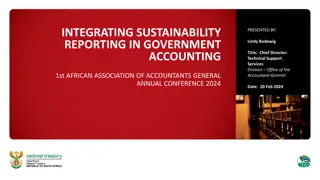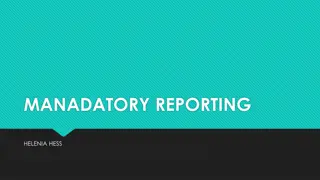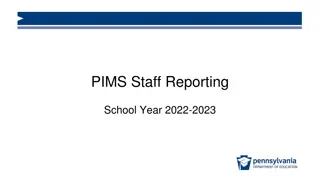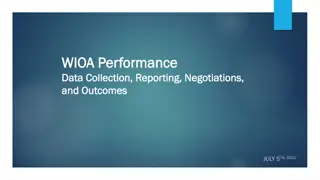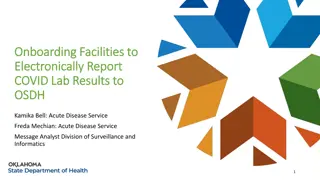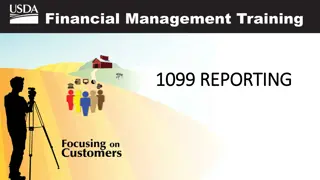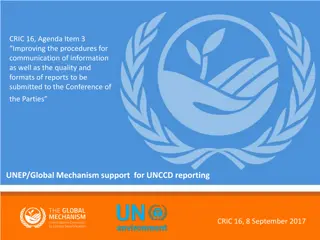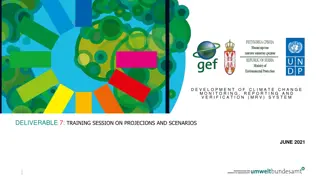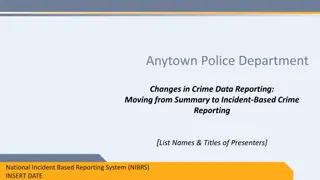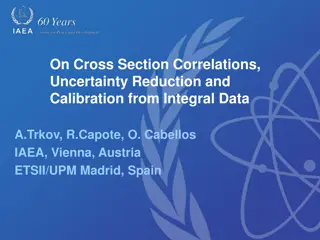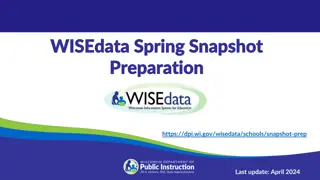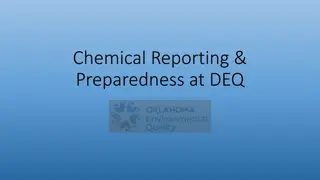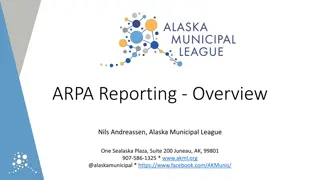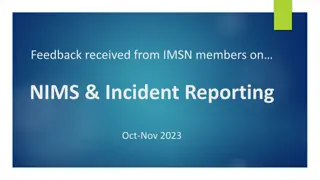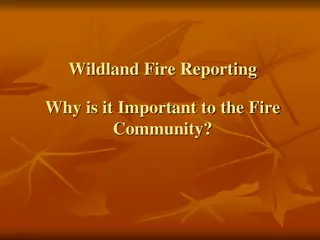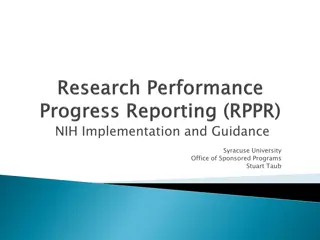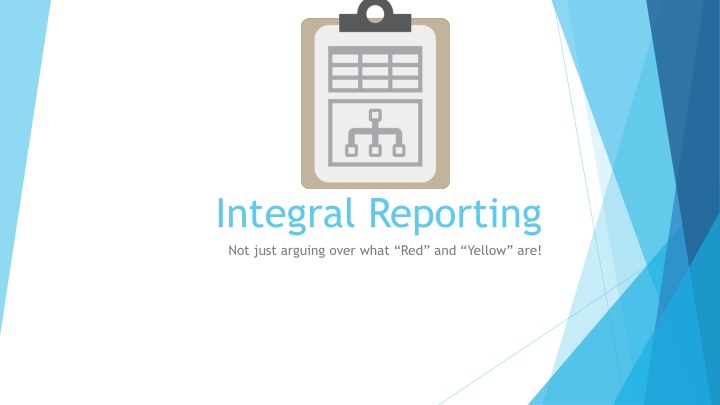
Mastering Reporting Skills: The Trace and Its Importance
Discover the core skill of reporting, going beyond mere data entry to understanding how information flows and is communicated in project management. Learn about the crucial stages of reporting and the concept of The Trace that helps in organizing data effectively.
Download Presentation

Please find below an Image/Link to download the presentation.
The content on the website is provided AS IS for your information and personal use only. It may not be sold, licensed, or shared on other websites without obtaining consent from the author. If you encounter any issues during the download, it is possible that the publisher has removed the file from their server.
You are allowed to download the files provided on this website for personal or commercial use, subject to the condition that they are used lawfully. All files are the property of their respective owners.
The content on the website is provided AS IS for your information and personal use only. It may not be sold, licensed, or shared on other websites without obtaining consent from the author.
E N D
Presentation Transcript
Integral Reporting Not just arguing over what Red and Yellow are!
Reporting Is A Core PM Skill This is an easy statement to make but it misses the importance of reporting. Reporting is not just a core skill, it is perhaps THE core skill after organizational ability. It might even be THE core skill because you can t organize what you don t know about. Even though we may try. A lot.
So What Do I Talk About When I Say Reporting? Reporting is the act of putting data into a form that allows someone to understand an issue. In our case, it s progress, status, needs, and so on. We, the AM/PMs/PGMs REPORT on Projects. There s often a lot of tangential reporting budget, finance, etc. Sometimes more than we d like. We should probably do a report on that.
So How Do We Get Good At Reporting I m going to discuss my seven stages of Reporting how someone comes in and assesses a situation and gets reports working. This philosophy can apply to when you re new or when you decide it s time to get these Reports in order before the next crisis. But first, let s discuss two things core to good reporting The Trace and Horizontal/Vertical Processes.
The Trace Knowing What You Know, What You Don t Know, and Knowing What You Know You Don t Know When You Now Know You Don t.
What Is The Trace The Trace is the act of understanding a stream of reporting from the smallest important item to the highest level and how information flows up and down. When I talk about doing a Trace I try to understand a report or report(s) and how the data goes up and down the different levels and how it transforms. The goal is to understand how data is communicated, changed, where this happens, and who is responsible. The Trace should cover the smallest relevant piece of data to the largest. A good Trace explains how reports work. It also may reveal unsettling problems.
An Example Of A Trace A Trace is mapping parts of a report and projects together. If your reporting us good you could find . . . There s a task . . . . . .That s part of a story . . . . . . That s in an Epic . . . . . . That represents a web page . . . . . . That is part of a web site . . . . . . That must be completed by a given date to reach a goal . . . . . . That is part of a marketing initiative. If you can do this you ve done an excellent Trace, or you re hallucinating things are more organized than they are.
When Do I Do A Trace And How Does It Work? Do one whenever you start a new project or job. Do one as a regular audit. Put it a reasonably human-readable format in case you re hit by a bus. Archive this information. Note that, realistically as you have a JOB unless you have time you may not do it as well as you d like . . . . . . . However I think a good Trace should be done whenever processes are audited. It should be projectized.
Horizontal And Vertical Processes Why People Hate Reporting And How You Can Get Them To Like It Or At Least Give Them Stokholm Syndrome
When Youre Working On Reporting, You ll Find Some People Don t Care We ve all run into this. We re probably guilty of it. We re probably guilty of it right NOW. A lot of Reporting is poor, compromised, or done with less enthusiasm. This is because the processes of reporting don t MEAN anything to them. This is where you can improve Reporting (and other processes) by understanding Horizontal And Vertical Processes.
Horizontal Processes . . . Are processes that benefit someone and/or the people on roughly the same level as them. Those doing the horizontal processes are affected by them and they mean something to them (even if they hate them). People will gladly do Horizontal Processes or hate them less. Agile is filled with Horizontal Processes as people report things that benefit them and others.
Vertical Processes . . . Vertical Processes benefit people above or below those doing them. Vertical Processes are often not as meaningful to people as they affect someone different than them. In general, people dislike Vertical Processes benefitting those above them as they don t understand it as much. It s hard to get people to do Vertical processes for this reason. An example would be doing a status report to upper management that rolls up assorted data for a team you won t meet.
The Ideal: Universal Processes The ideal processes benefit people at one s level and above and/or below them. These processes are not only engaging (because people care about their level) but meaningful as the data is easy to relate to people above and/or below them. A good Universal Process is important, beloved, and once you build one hard to move. . . . Which can be a problem if its not that great.
Your Goal In Reporting First, Maximize the amount of Universal processes. Maximize the amount of Horizontal processes. People will do these. Automate or minimize Vertical processes as much as possible. Streamline. Not everyone is like us, they don t like reporting.
The Seven Stages Of Reporting When You Decide To Make Reporting Work. You Sad, Sad, Fool.
This Is A Guide To Evaluating And Improving Reports It assumes you are either starting a new position or project, or want to understand your current reports. It does not assume you like it. This is a guide to both what to do and what you ll probably experience.
Step #1 - Report The first thing to do while understanding Reporting is to keep it running. As bad as it is doing it will help you understand it, and prevents things from breaking down. It also prevents you from making unwise attempts to change everything at once. Do not stop using a report unless there is an overall compelling reason. The fact you hate it is not good enough.
Step #2 - Research Once you re running the Reporting (and understand it enough to do so), you need to research it. This is when the Trace begins. Your goal is to understand: Your goals. Reports have goals. If you can t find goals, you have a problem. What data is used and where does it come from so you understand the data flows. How is data transformed so you understand how parts of the report connect. Who does it so you know who to work with and who to blame.
Step #3 - Relate You ve researched how the Report works, or at least the pieces of it. That s the first part of The Trace. The second part is Relate understand how the different pieces of the report fit together, how the data moves. This may not always be apparent so it s a separate stage. Often you can t Relate until you Research. At the end of the Relate stage you should be able to roughly describe how a report works from smallest to largest components You ll also start seeing flaws (if you didn t see them earlier). Remember reporting is not just data, it s the flow and connection of data.
Step #4 - Reveal Now that you ve run the report, figured the parts, understood how they connect, it s time to start studying it and talking about it. First, review it yourself. Maybe you got it wrong. Secondly, start talking to other people about what you found. Ask questions, tell people what s up. Get their viewpoints. This is also important as you should give yourself enough time to talk research but don t go fixing everything without any communication. See, Reveal is what happens before you realize what it means . . .
Step #5 - Regret After the Reveal there s usually Regret people start seeing what s wrong with the report. Sometimes they knew it and now it s unavoidable. Sometime it s surprising. The Regret stage shows you did the Reveal stage right you ve exposed any problems so you can fix them. This stage can get kind of crazy as, if you did good research, you just might make people a little unsettled. If you re not a bit uncomfortable, review things. You probably missed something.
Step #6 - Responsibility Now that you ve done your research, revealed the status, and possibly terrorized everyone it s time for the Responsibility stage. At this stage, having exposed flaws, you also encourage people to take responsibility but most of it is on you. Because you did it. This stage is important Psychologically because 1) it shows you can help, 2) people need help, 3) the Regret stage will lead to some panic unless someone directs responsibility. You may also have identified processes or individuals causing problems, and they need to be addressed but in a non-disruptive way. It helps to prepare for this stage ahead of time.
Step #7 - Revision Now you start changing things. You know what s wrong, people know, and we know who has to fix it. Put this into a project of some kind. At least use a list of tasks, but ideally a linear or agile-like system of improvements. Hey, you could do a report on the report, thus inviting various Inception jokes.
And Beyond No matter how much you fix a report it s necessary to keep using it, running it and auditing it. The act of running a report will let you find flaws . . . . . . And then the whole process starts again.
So What Did We Learn? A Review Of Integral Reporting
So What Did We Cover The Trace Understanding a report from bottom to top is vital to designing good reporting. I call this The Trace. Processes can be thought of as Horizontal (helping oneself and those on one s level), and Vertical (helping those above or below one). If you can make a Universal process that is both, you ll make things more efficient. Reporting can be thought of as seven stages Report, Research, Relate, Reveal, Regret, Responsibility, Revision.


